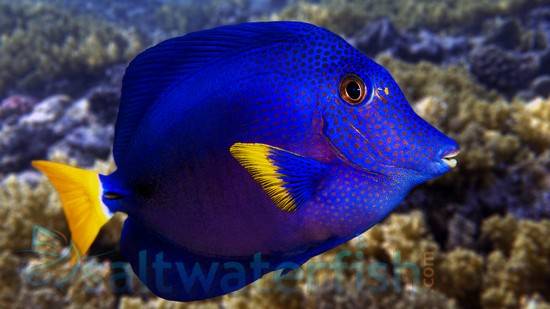The Margarita Snail (Margarites pupillus) known to tropical fish keeping enthusiasts as the Puppet Margarite or Little Margarite is a marine turban snail species that is found from the Bering Sea to Southern California.
Margarita Snails are normally found among rocky shorelines and kelp beds of their range at depths from the low intertidal zone to over 325 feet where they are often collected off the Large Brown Kelp (Allium fimbriatum).
Margarites pupillus are not natural diggers. They are constantly on the move and are considered nocturnal animals, with the peak of their activity beginning at dusk.
Substantial numbers of Margarita Snails can typically found on the upper surfaces of Allium fimbriatum rather than on the undersides of the kelp. Apparently the kelp provides the Margarita Snails a safe haven from benthic predators that prey on them from below, especially crabs.
Although Margarita Snails are frequently found together in large numbers, they are not necessarily social animals. They are a docile, solitary, non aggressive, species that do not seem to associate with conspecifics unless they decide to mate.
Margarites pupillus are small marine mollusks that seldom exceed 1 inch in length. True
Margarita Snails have a smooth, silvery, pink to orange colored conical formed shell that is narrowly umbilicated and consists of 4 to 5 whorls with a flat base. The opening to the shell is circular with an arched columella.
Margarita snails are often covered with algae that makes it nearly impossible to see the natural color of their shells. The algal growth on the shell provides a natural camouflage for predator avoidance.
Margarita snails are gonochoric (separate male and female individuals), without any external sexual dimorphism.
Unlike many marine snails that can retreat into their shell and close it with an operculum, the Margarita Snail does not have a proper defensive mechanism. Instead, they rapidly flick their shells back and forth to shake off a predator or simply try to outrun the predator. Their top speed is about 4 inches/min which in a snail’s world is pretty quick.
The Margarita Snail is completely reef safe and is best housed in a well established reef aquarium with a smooth gravel or stony substrate, plenty of diatoms and algae encrusted live rock arranged into hiding places, and sufficient room for them to roam and graze. The snails are too small to damage any decor in a reef tank and will not bother corals.
Margarita Snails are non-aggressive, docile by nature, and do well in a FOWLR tank with peaceful tank mates like dwarf shrimp and small, non carnivorous fish.
Good tankmates include Sexy Shrimp, Pederson Cleaner Shrimps, Red Fire shrimp (Lysmata debelius), Peppermint shrimp (Lysmata wurdemanni) or Skunk Cleaner (Lysmata amboinensis), Bumble Bee Snail, Fighting Conch Snail, Cerith snails, Trochus Snails, etc.
Avoid keeping them with large and/or aggressive fish, Coral banded shrimp, most crab species, and all species of hermit crabs including; the Halloween Hermit Crab, Blue Leg Hermit Crab, etc.
Like the Astraea Turbo Snail (Lithopoma tectum); the Margarita Snail (Margarites pupillus) has a ravenous appetite for algae which makes them excellent candidates for a tank clean up crew. In the aquarium, they are great scavengers that thrive on brown algae, Green spot algae, debris, and other fish waste.
The Margarita Snail is not especially easy to keep. They are very sensitive to changes in water values, especially temperature.
In addition to pristine water quality and a constant food source, they require a water temperature between 59–68°F, calcium concentrations in the range of 400 to 450 ppm, and magnesium between 1250 and 1350. An excellent filtration system, protein skimmer, and chiller system is recommended to keep this species.
Though there have been a few reports of successfully breeding them, Margarita snails do not generally reproduce in an aquarium environment.
Males and females cannot be distinguished by size or any other external features. Margarita snails are broadcast spawners. The females do not lay eggs on the substrate; instead they release millions of ufertilized eggs (oocytes) into the water column as the males release their semen to fertilize them. Spawning lasts anywhere from 5 to 20 minutes. Veligers of Margarita snails hatch prior to torsion. Their shell secretion starts just before hatching. Initially, the shell is soft, flexible, and crumpled easily prior to and during torsion (72 hr) but becomes rigid soon afterward.
In an aquarium, the water clouds up until the corals and other filter feeders eat the minute eggs. Currently, no data exists on how long it takes the eggs to hatch and metamorphose into the crawling stage.
In their natural environment, the Margarita Snail feeds on macroscopic algae and detrital elements. Their primary food is diatoms but they also eat unidentified filamentous red algae, sponge spicules, filamentous brown algae, remains of hydroids, bryozoans, and filamentous green algae. In an established aquarium environment, they feed on the algae in the tank along with any leftover shrimp or fish foods, such as pills, flakes, pellets, algae/spirulina wafers, frozen foods, etc.
The Margarita Snail (Margarites pupillus) is a relatively common saltwater species that can be purchased from online retailers, wholesalers, and transhippers at reasonable prices. They are often sold online to tropical fish keeping enthusiasts as members of “cleanup crews” for reef tanks. Currently, the pet industry completely depends on wild caught species.
Minimum Tank Size: 10 gallons
Aquarium Type: Established Reef or FOWLR
Care Level: Difficult
Temperament: Peaceful
Aquarium Hardiness: Not Hardy
Water Conditions: 59–68°F, dKH 8 to 12, pH 8.1-8.4, sg 1.021-1.025
Max. Size: 1″
Color Form: Orange, White, Pearl-Brown, Lusterless, Pink
Diet: Omnivore/detritivore
Compatibility: Reef Compatible
Origin: Bering Sea to Southern California
Family: Margaritidae
Lifespan: 1 – 4 years
Aquarist Experience Level: Expert





